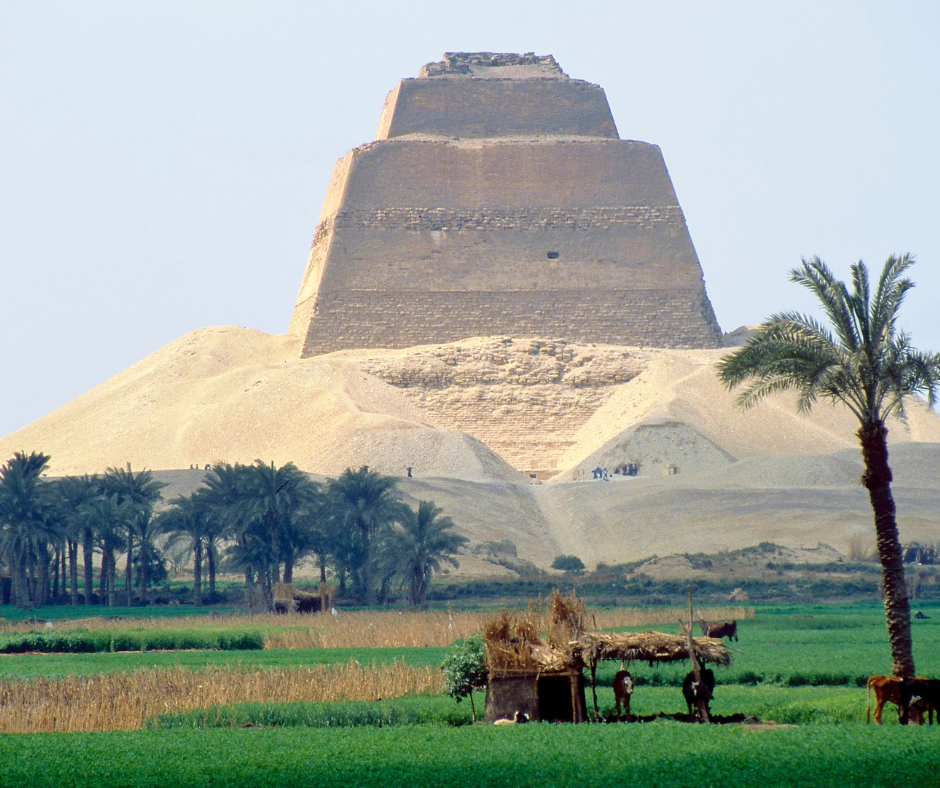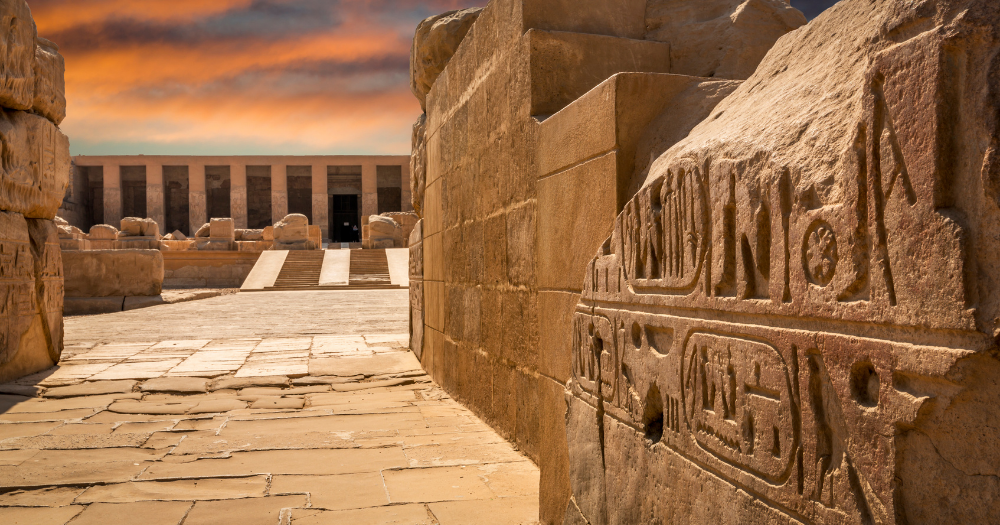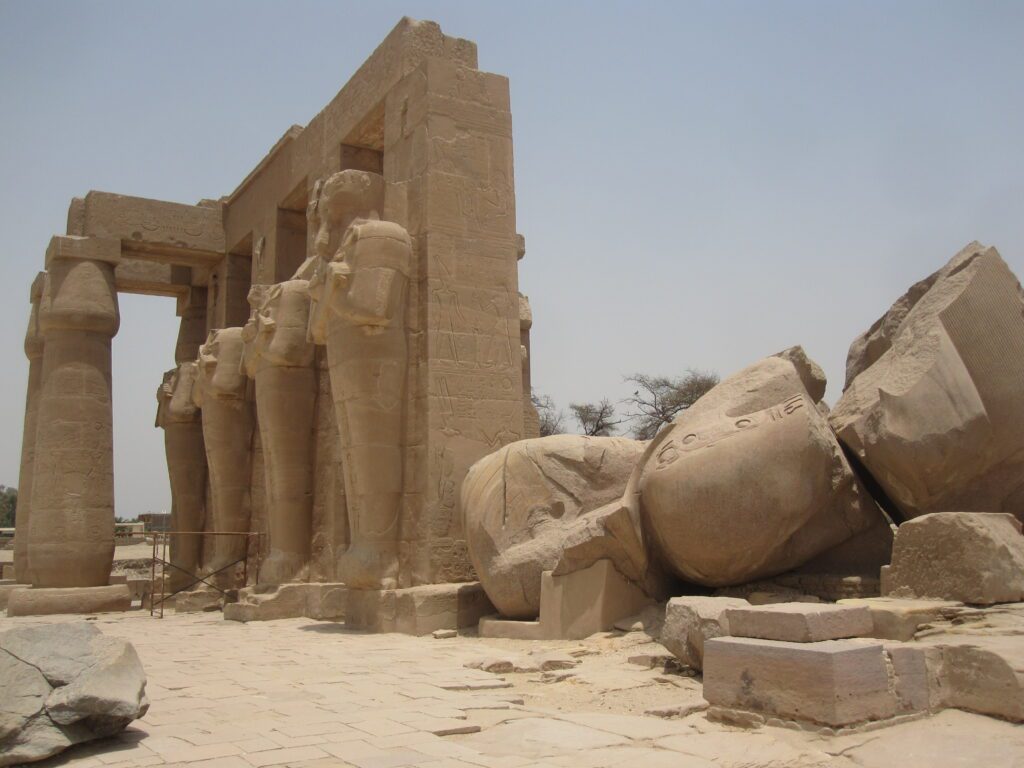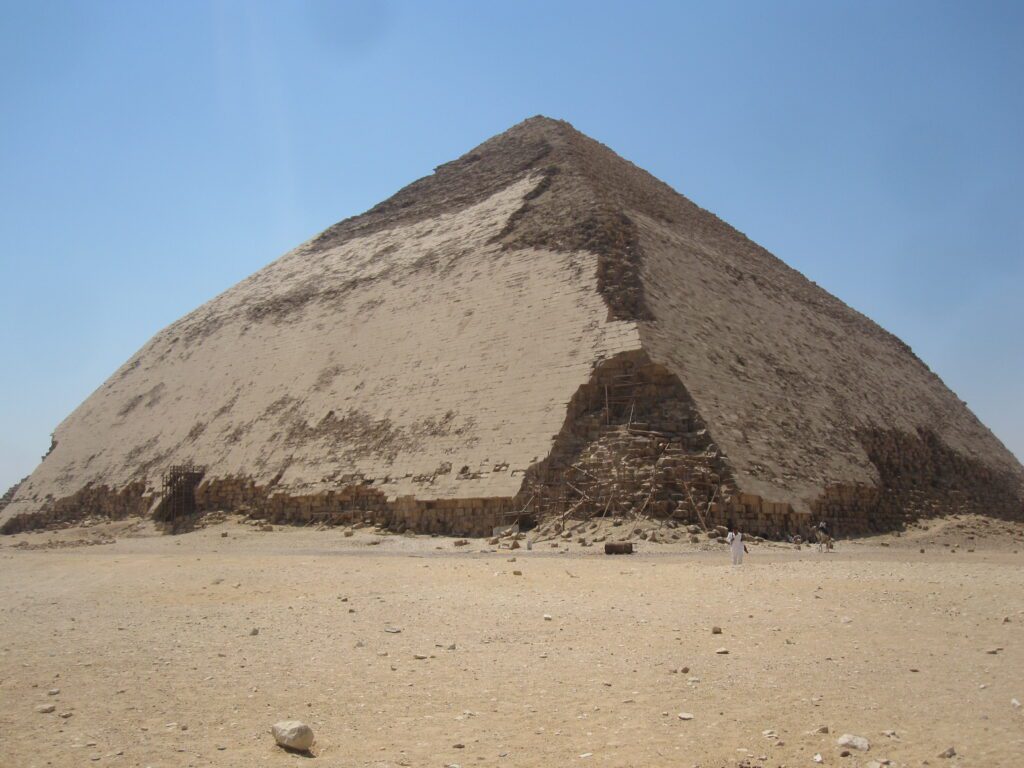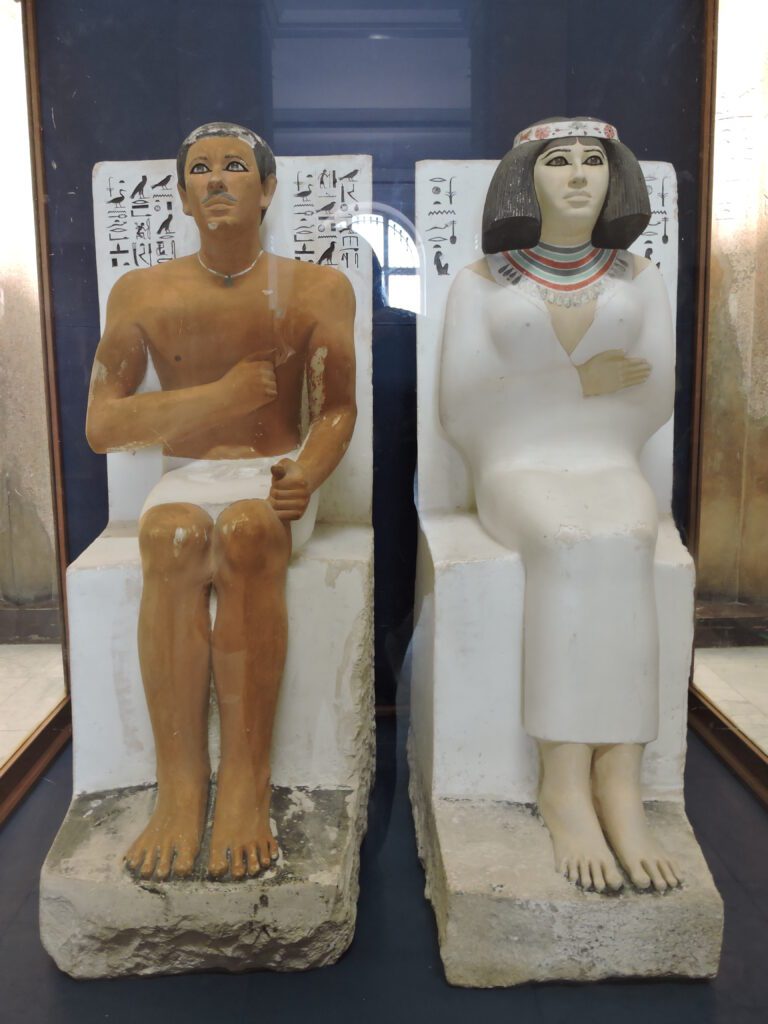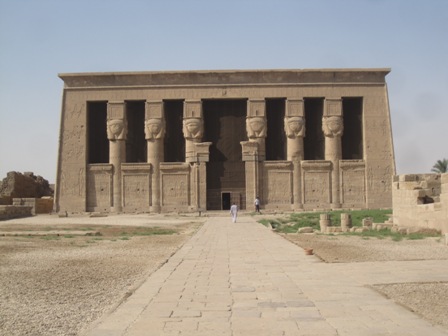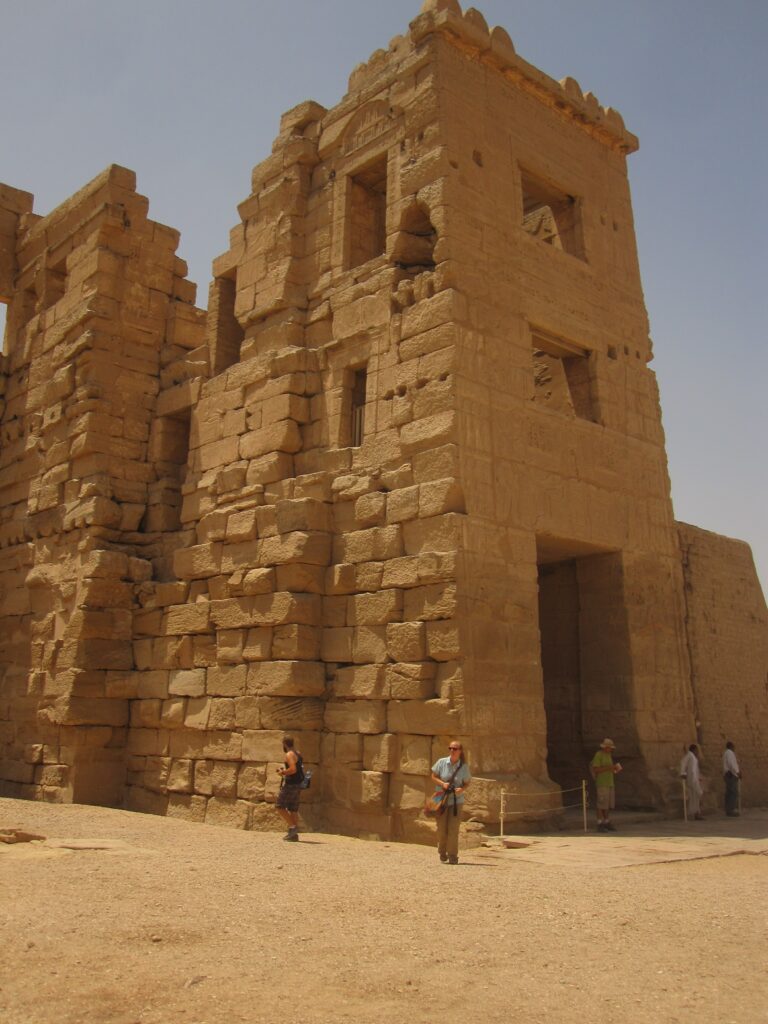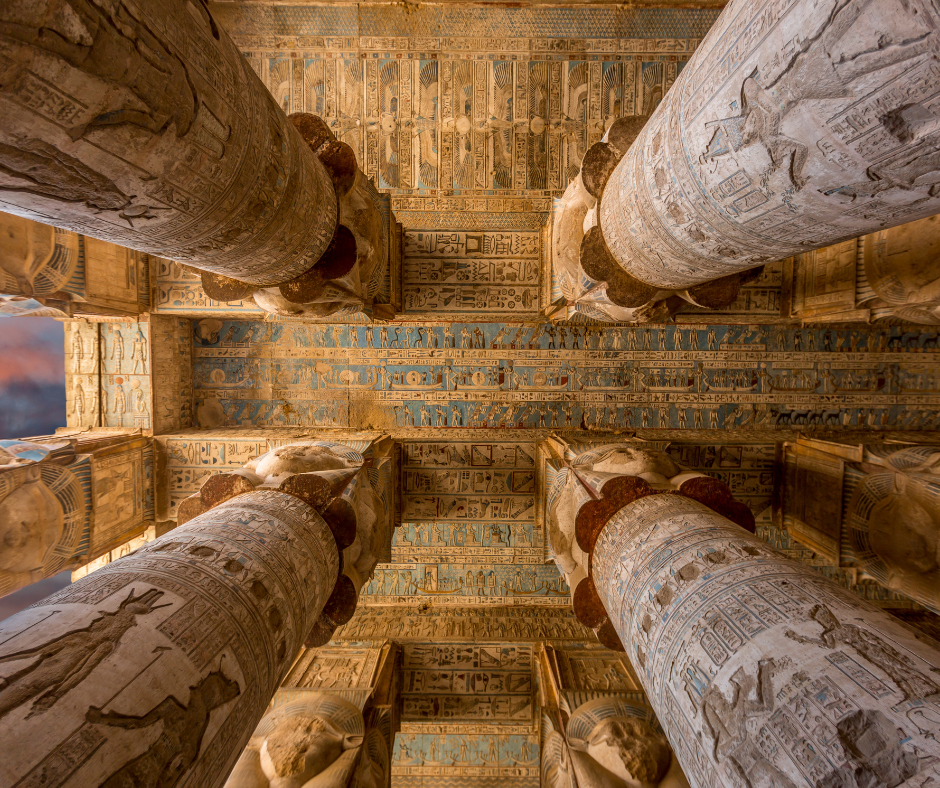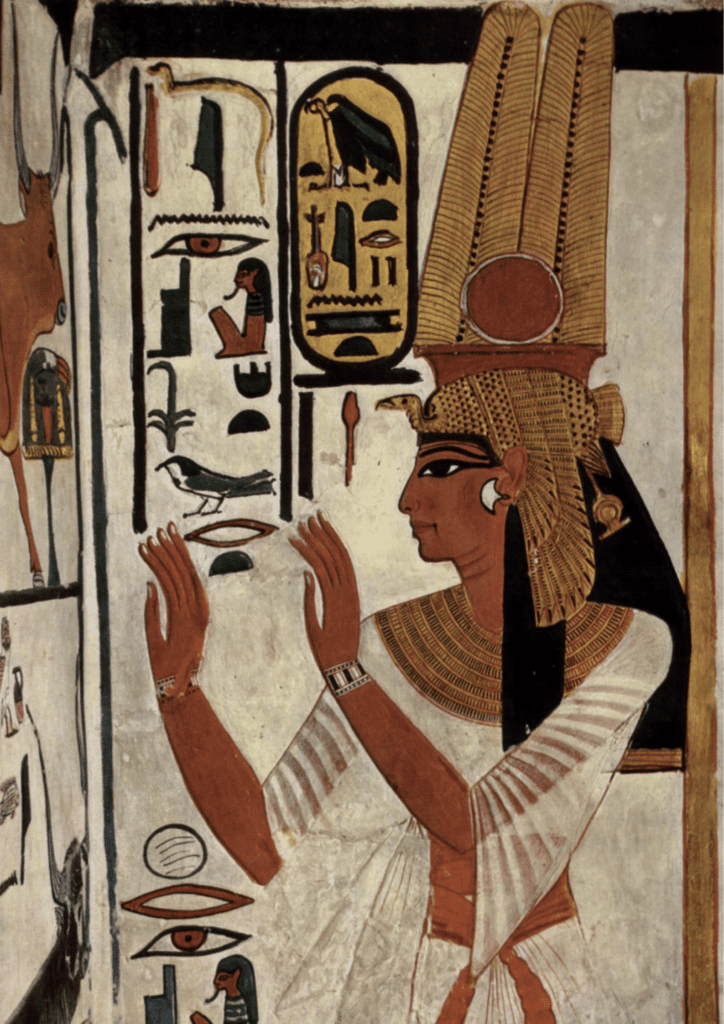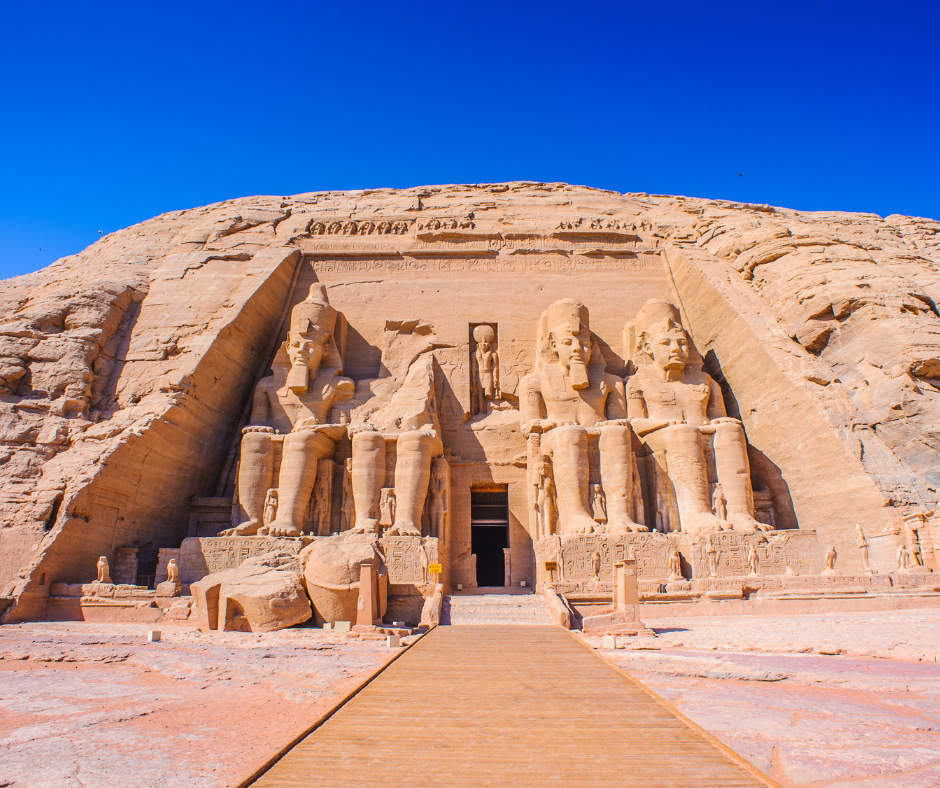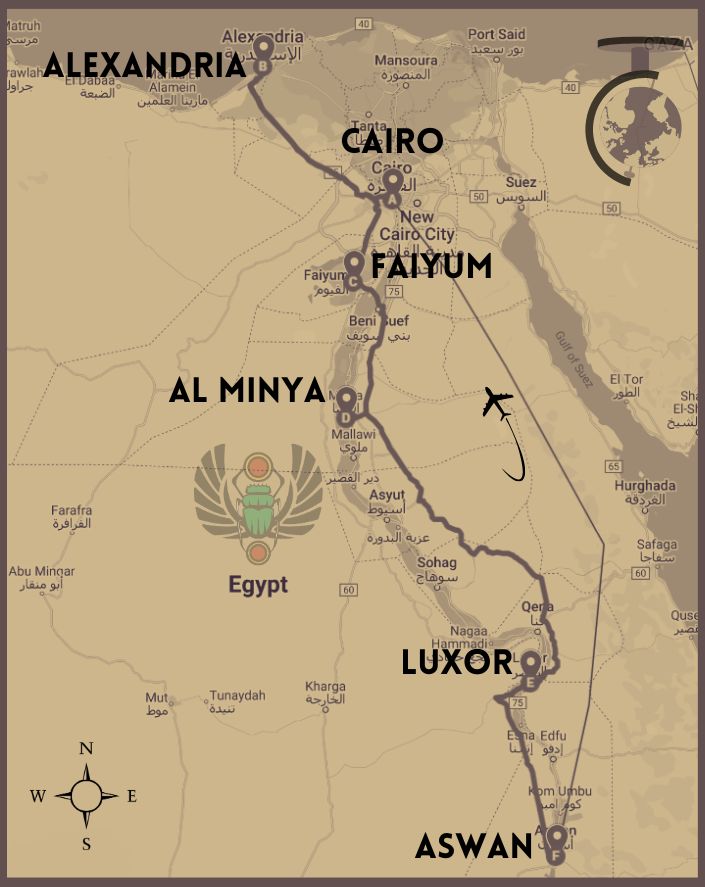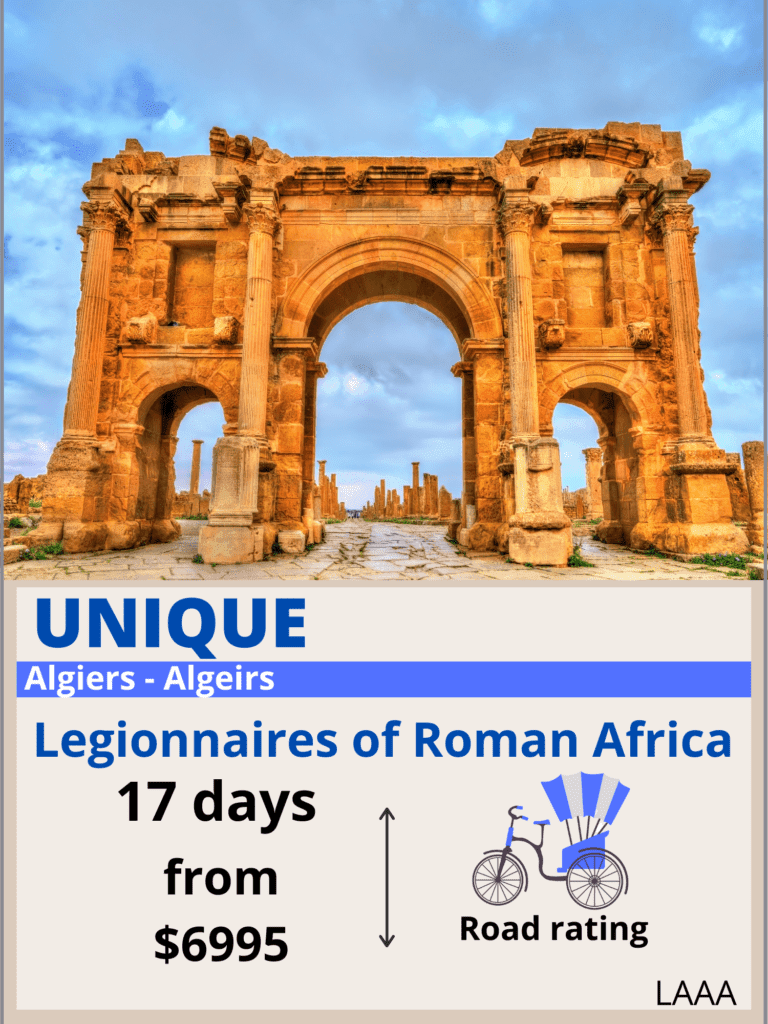Invaders, Traders & Pyramid Builders – Egyptian archaeology tour
Thanks to special permission from the Egyptian government this tour enjoys unparalleled access to many archaeological sites all over Egypt. Visit an active archaeological dig, explore the newly opened Grand Egyptian Museum* and stand in the Sphinx enclosure at Giza right between the paws of the ancient stone beast. Explore the opulent tomb of Nefertari, in the Valley of the Queens, and the immense tomb of Seti I, both recently the subject of years of ongoing renovations. Discover the extensive subterranean labyrinths of the Step-Pyramid of King Djoser and the Serapeum, the tomb of the Apis Bull at Saqqara and venture into the deserts of middle Egypt to explore the tombs of the Amarna period and Akhenaten’s lost city in the desert.
In addition to the unreal archaeological experiences on offer, journey into the Fayoum Oasis to discover the whale fossils in the desert, wander the streets of the village of Tunis; considered one of the most beautiful villages in Egypt and discover Egyptian cuisine and medieval architecture in old Islamic Cairo
Discover a deeper understanding of Egypt’s rich ancient past with a trip leader who is degree qualified in Ancient History, specialising in Egyptology along with a specialist Egyptologist guide. Completely immerse yourself in Egypt and it’s culture with unique and traditional accommodation on this one-of-a-kind archaeological adventure.
15 Days
CAIRO – CAIRO
$10 935 AUD
Departure: 13 September 2024
OR CONTACT US for more information
Trip code: IBCC *from
ARCHAEOLOGY TRIP HIGHLIGHTS
- Unparalleled access to sites which only accept a low number of visitors or are off limits to the public completely such as the tombs of Nefertari & Seti I and the underground chambers of the Step Pyramid.
- A tour of the long awaited ‘Grand Egyptian Museum’ including the Grand Staircase and Tutankhamen exhibit.
- Discover some of Egyptology’s lesser-known marvels with visits to the early 4th dynasty pyramid of Meidum, the Seti I temple at Abydos, the tomb of the Apis Bull at Saqqara and the archaeological site of Amarna, Akhenaten’s city in the desert
- Visit an active archaeological dig at Hierakonpolis, Egypt’s first unified capital and the site of history’s first zoo.
- Safari into the dunes surrounding the Fayoum to see the fossils of whale bones in the desert, explore the beautiful streets of Tunis village; considered one of the most beautiful in Egypt and pay a visit to the enigma of the archaeological site of Tanis which contains statues that date back to before the city was founded.
- Stay in traditional and historic hotels throughout, as well as locally boutique hotels and lodges on this archaeology trip to rival all others
Reasons you’ll love this tour
- You have an interest in the archaeology of ancient Egypt either at a personal or academic level
- You want to visit more than just the main sites like the Pyramids and the Valley of the Kings
- You don’t want to share your site visits with thousands of tourists
- You’re excited to visit sites that are either usually closed to the public or only accept a very limited number of visitors
- You feel travelling with an expert is the way to get the most out of an experience in Egypt
- You’ve always wanted to experience an archaeological dig
- You enjoy discussion and debate over a meal or glass of wine at the end of the day.
ITINERARY
Trip price does not include
- International airfares
- Meals not included as per trip itinerary including drinks and mini bar
- Additional accommodation before or after the tour
- Items of a personal nature including but not limited to laundry, souvenirs, porterage etc.
- Travel insurance – please note comprehensive travel insurance is a condition of travel with Inverted Atlas
Details
Duration: 15 Days
Trip style: Special Interest – Archaeology Trip
Group size: Minimum 6 / Maximum 15
Trip code: IBCC
Cost: $10 935.00 AUD twin share
Single supplement: $2507.00 AUD
Inclusions
- 14-nights accommodation in traditional hotels and lodges
- Airport transfers on arrival and departure
- Visit for Egypt & assistance on arrival
- Flight Aswan to Cairo in economy class
- Entrance to archaeological sites and museums as outlined in the itinerary
- Meals as specified in itinerary (B = Breakfast / L = Lunch / D = Dinner)
- Services of your Inverted Atlas trip leader and Egyptologist Guide
Optional experiences (not included):
- Aswan: Abu Simbel Excursion (by Road)
- Aswan: Abu Simbel Excursion (Flight)
* Please note some optional experiences must be booked prior to travel. You will be given the option to add these experiences at check out
This archaeology trip travels through Egypt, a country well accustomed to tourism. Egypt is an Islamic country and women should consider dressing appropriately so as not to cause offense culturally and to avoid attracting unwanted attention, however there is no compulsory dress code. Toilets you encounter in public restrooms or in remote unscheduled stops along the way may be of the eastern ‘squat’ variety. There are some long travel days, but rest assured on arrival we will always be checking in to accommodation that is of a good standard. The ‘hassle factor’ in Egypt can be somewhat confronting, local people often see travellers as an opportunity to make money and may try to give unsolicited ‘help’ in order to gain ‘backsheesh’ or tips. This help could be in the form of carrying your bags, giving you directions or even something as simple as pointing out something in a temple (even something completely obvious). It is necessary on this trip to bring a thick skin and a good sense of humour as this is part of Egypt’s colourful culture.
Facilities such as pharmacies, banks and ATM’s can be found in large cities and towns but will be absent from smaller villages and remote places. Wifi in Egypt will most certainly not be up to the standard you expect at home and will be non-existent in some destinations.
Any dietary requirements should not be an issue while traveling on this trip, provided they are disclosed to Inverted Atlas at the time of booking.
A note about fitness
This Egyptian archaeology tour requires a good level of physical fitness. You should be able to walk up to 4km at times and manage uneven surfaces during sightseeing and while walking around archaeological sites. In addition, you should be able to climb up to 100 stairs unassisted and there is an outside chance you will need to be able to use an eastern style squat toilet (beware if you have knee issues). If you suffer with claustrophobia, please be aware that we will be descending the narrow passages of pyramids and subterranean tombs.
You will need to be able to carry your own luggage to and from the coach and into the accommodation. (Due to OH&S regulations our trip leaders are not able to assist with luggage.) For a small fee locally, porterage can often be arranged – this will be at an additional cost to you and is not payable by Inverted Atlas.
In addition, you should be in good health, with no major chronic conditions requiring frequent medical attention. This trip travels through some remote locations where the availability of a hospital or even phone reception to call an ambulance is limited. While all our trip leaders are required to have a valid first aid certificate, they are far from doctors and any assistance they are able to provide will be limited to basic first aid. For more information please see our booking conditions.
Single supplement
Traveling by yourself? No problem, we love single travellers and don’t believe in penalising them by charging half the trip price again for our single supplement. With us you are only paying the actual cost to have a room all to yourself. If you’re up for making a new friend, you can elect to share with another single traveller (if available) of the same sex and only pay the twin-share price. The choice is yours!
Trip leader description
Accompanying you along your Egyptian archaeology tour will be your Inverted Atlas trip leader. Your trip leader is a logistics extraordinaire, keeps the trip running smoothly and ensures you have the best time possible on your trip. It is important to know that while your trip leader has the best job in the world, they aren’t actually on holidays, but rather they are there to make sure you have the best time while you are on your holiday! Your trip leader may at times need some time out so that they can complete back of house tasks that ensure everyone continues to enjoy the trip. It is also your trip leaders’ job to handle any issues (heaven forbid!) that come up while you’re on your trip like:
- If you lose your passport or other travel documents
- If there is a problem with your room at the booked accommodation – seriously please tell your trip leader don’t wait until you leave
- If you become unwell and need to find a pharmacy
- Assisting with restaurant recommendations or additional sightseeing during free time
- Questions regarding the itinerary
This Egyptian archaeology trip is really special and as such requires a special trip leader. In addition to being a logistics extraordinaire and keeping the trip running smoothly, the trip leader on ‘Invaders, Traders and Pyramid Builders’ has an advanced degree in Ancient History and has specialised in Egyptology. This means that in addition to your local Egyptologist guide, you will also have a trip leader who has travelled to Egypt multiple times and knows the country’s archaeological history inside out.
Itinerary disclaimer
This itinerary is correct at the time of upload to our website and we have composed it in good faith. From time to time we may elect to make changes before departure, if we are making a big change we will of course notify you, however if it is a small change this will be reflected in the final trip notes. So, make sure you download these prior to departure. Small changes prior to departure are usually made with the groups best interests in mind and come about due to liaising with our best resources – our past travelers and of course our trip leaders! The ability to change and evolve depending on what our travelers enjoy is what makes us such a great trip operator.
While we strive to operate our trips exactly to the letter of the itinerary, sometimes we may need to make changes on the ground while the group is on the road. This is all part of the adventure of traveling and we would ask that you come on your trip with an open mind and a good sense of humour because as much as we want it to, everything doesn’t always go to plan. In fact, these impromptu situations often make the best stories that you can have a laugh with your friends about later.
Age requirements
Minimum Age: 16 years
There is no shared accommodation on this trip, and we will be traveling through a relatively well travelled part of the world, in this instance we would welcome everyone above the age of 16 years. Should you wish to bring younger children, please give us a call.
There is no upper age limit for this trip, but you should consider the above fitness requirements prior to booking. If you are 65 years or over, you will be asked to complete our Health Check Form and have your medical practitioner sign it to confirm you are in good health and able to participate safely on this trip.
Travel insurance
Please note that comprehensive travel insurance is a condition of travel with Inverted Atlas. Insurance must include provision for medical situations, emergency medical repatriation to your home country and personal liability at a minimum. Proof of valid travel insurance will be requested by your trip leader on arrival at the pre-departure meeting. Please have this paperwork available for them. If you are unable to provide proof of comprehensive travel insurance, you may not be allowed to join the trip and no refund will be payable.

